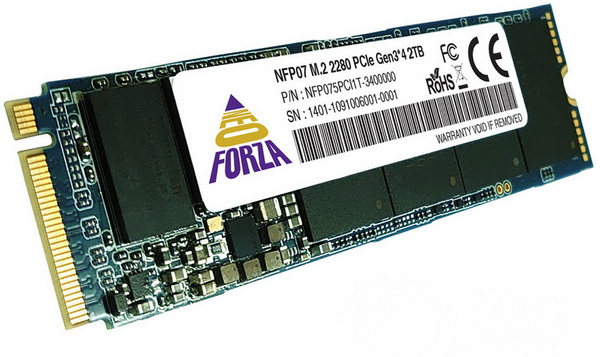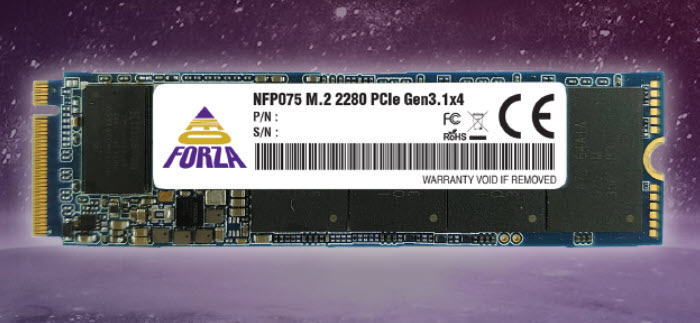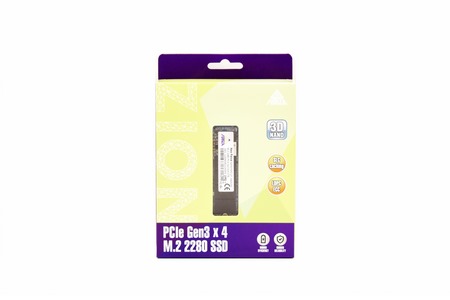INTRODUCTION

PCIe Gen 5 M.2 NVMe SSDs may already be on the way but the fact of the matter is that most people don't even have M.2 NVMe compatible motherboards, let alone PCIe Gen 4 ones. This means that the most popular M.2 NVMe SSDs right now are PCIe Gen 3 ones (3x4) and that's also why as of now most manufacturers have very few PCIe Gen 4 models in their product lines (some still have none). With a rather small chunk of the consumer market already onboard the PCIe Gen 4 train with AMD's X570 and Intel's Z590 motherboards (even some Z490 ones) M.2 NVMe PCIe Gen 4x4 models will probably be the next best thing long before PCIe Gen 5x4 ones. For now, however PCIe Gen 3x4 M.2 NVMe SSDs are driving the consumer market and today with me i have the top of the line model currently by Neo Forza, the ZION NFP075 2TB.
We are a professional team, studying in computer memory and storage devices industry for more than 10 years. In order to meet the rising demand on speed and capacity of the high-end gaming market players, we created Neo Forza, a new generation of ultra-standard overclocking module, SSD and other related storage device designing brand. Neo represents from virtual to reality, showing our core value for product innovation. Forza shows our strength and determination to meet gamers every need. Neo Forza possess strong resources, focus on core technology. From research & design, specific production to exceed the testing benchmark; Neo Forza keep pushing over technical boundary, providing top-notch performance and quality, providing gamers / game players extraordinary using experience.
The ZION NFP075 line of M.2 NVMe SSDs by Neo Forza (currently available in 256GB/512GB/1TB/2TB capacities) is based on the highly popular E12S high performance NAND flash controller by Phison (PS5012-E12S / Gen3x4 NVMe 1.3 interface) together with 96-Layer BiCS4 3D TLC NAND flash by Toshiba and a single 512MB DDR3L SDRAM module by UniIC Semiconductors. This combination allows the ZION NFP075 to reach 3400MB/s and 3000MB/s in reads and writes respectively and even though these are not numbers we haven't seen many times in the past they should easily cover the majority of consumers out there (with ease). The Phison PS5012-E12S controller used in this M.2 NVMe SSD features a total of eight NAND channels with 32 CE targets, supports up to 8TB of NAND, is Toggle 3.0 & ONFi 4.0 compliant and packs several technologies aimed at both high performance and reliability including StrongECC, SmartRefresh, SmartFlush, end-to-end data protection, thermal monitoring, AES-256 encryption, SLC caching and TCG Pyrite/OPAL support. As for endurance Neo Forza reports an MTTF (mean time to failure) of 1.8 million hours and TBW of 420 for the 256GB, 890 for the 512GB model, 1350 for the 1TB model and 1550 for the 2TB model and covers the entire line with a 3-year limited warranty.
SPECIFICATIONS AND FEATURES

THE ZION NFP075 2TB
Neo Forza uses a small cardboard box to ship the ZION NFP075 SSD inside that has a small clear plastic opening at the front from where you can see the drive itself.
The product specifications are printed at the rear of the box right over contact information for Neo Forza.
This M.2 NVMe PCIe Gen3x4 SSD follows the typical 2280 form factor (22mm wide and 80mm long) and features a regular sticker on top.



 Under the sticker we find the Phison PS5012-E12S NAND controller right next to the UniIC 512MB DDR3L SDRAM module and the 4 Toshiba 3D TLC NAND flash modules.
Under the sticker we find the Phison PS5012-E12S NAND controller right next to the UniIC 512MB DDR3L SDRAM module and the 4 Toshiba 3D TLC NAND flash modules.
The other side of the PCB is empty so it's possible that Neo Forza may launch even higher capacities later on.
TEST BED


TESTING METHODOLOGY
After over 12 years of testing solid state drives, i’ve concluded that it's almost impossible for any single benchmark suite to accurately measure their performance and that's why in certain benchmark suites we see amazing read/write performance numbers with some drives while in others things are quite different. The reason behind this is that some benchmarking suites are configured to read and write random chunks of data while others read and write constant (sequential) ones. So that's why i always use a very wide selection of benchmarking suites including AIDA64, HD Tach RW, HD Tune Pro, Crystal Disk Mark, Sisoftware Sandra Pro, AS SSD, IOmeter and ATTO. To get the most accurate results each test gets repeated a total of 6 times with the average performance numbers recorded into our charts*. Also, as of February 25th 2015 our results will also include the Storage Networking Industry Association’s (SNIA) IOMeter tests. These tests include a 12 Hour write test used to “simulate” performance degradation over time and a mixed workload test which basically shows what you can expect when using an SSD continuously for roughly two hours. Unfortunately, due to the time required for these tests we repeat them a total of 3 times and not 6 as the above.
Many people have made inquiries about our charts in the past so once again please do keep in mind that the Charts have the average performance numbers of each drive recorded and not the peak (highest) ones. Also, although every single one of these programs can help potential buyers choose the right drive for their needs you should also remember that from any kind of benchmark up to real world usage the gap is not small (and usually most differences will go unnoticed by most people). All tests were performed in a fresh Windows 10 Pro x64 installation complete with every update up to the date of this review.
* Since November 2018 the SSD comparison charts have been divided to 2.5” and M.2 models to reduce their growing size.
** Unless stated otherwise the Ryzen 9 3950x based Test Rig used for M.2 Gen 4 SSD reviews is not located in the lab.
*** As of January 2021 for Gen 3x4 models I’ll be using the Core i9-7980XE test rig (after numerous tests the up to 6% difference in read & write performance compared to the i7-6700 system simply wasn’t enough to justify having an extra test rig around).
TEST RESULTS - AIDA64 / ATTO


TEST RESULTS - HD TACH RW / HD TUNE PRO


TEST RESULTS - SISOFTWARE SANDRA PRO / CRYSTAL DISK MARK


TEST RESULTS - AS SSD / IOMETER


TEST RESULTS - IOMETER SNIA

CONCLUSION

Neo Forza is certainly not among the very first names that come to mind when talking about SSDs but at least in regards to their ZION NFP075 2TB I have to admit that I was quite surprised with its performance. This of course is in comparison with similar models based on the Phison E12S NAND flash controller (and in some cases the same 3D TLC NAND by Toshiba) where the difference in performance is in some cases significant. Of course, I would had liked to see a bundled heatsink since temperatures do get quite high under stress but the same applies for over 90% of the models in the market today so it is what it is. Warranty is also something Neo Forza could improve on, yes 3 years is not a small period of time but compared to the 5 years offered by the competition it does feel like it is.
Neo Forza just launched the 2TB variant of their ZION NFP075 M.2 NVMe SSD and so it’s not widely available yet, far from it really. Still based on the 1TB version I’d expect it to retail for no less than USD240/240Euros, a price tag which is pretty much what we’ve seen by similar models. At the end of the day the ZION NFP075 is among the fastest Phison E12S based PCIe Gen3x4 M.2 NVMe SSDs to reach the lab and for that it does deserve the Golden Award.

PROS
- Very Good Overall Performance (Above Similar E12S Based Models)
- Endurance Numbers (1.800.000 MTTF / 1550 TBW)
- 3 Year Limited Warranty
- Price (For Some)
CONS
- Thermal Throttling (12 Hour SNIA Test)
- 3 Year Limited Warranty (Compared To The Competition)
- Current Availability

 O-Sense
O-Sense













.png)

